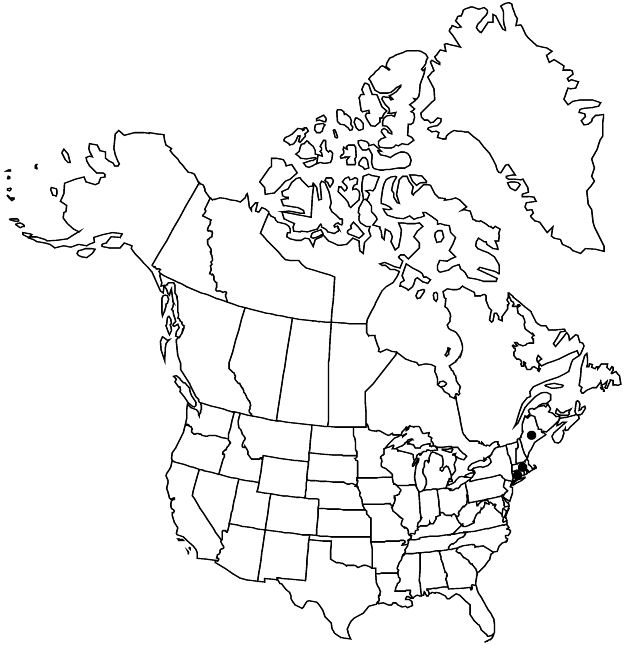Crataegus ×fretalis
Rhodora 5: 112. 1903. as species
Shrubs or trees, 60–70 dm. Stems: trunk bark grayish to grayish brown, checked; twigs straight or slightly flexuous, new growth green, tinged red, at end of 1st year bright reddish brown, lustrous, 1–2-years old darker red-brown; thorns on twigs few, ± straight, 1-year old shiny red-brown, stout, 2–4 cm. Leaves deciduous; petiole slender, length 33–60% blade, glabrous, minutely red-glandular; blade yellow-green, ovate or oval, 5–8 × 4.5–7 cm, thin but firm, base rounded, lobes 3–5 per side, small, lobe apex acute to acuminate (or larger and sometimes with proximal lobes enlarged and deeply cleft), margins sharply serrate, venation craspedodromous, veins 4–6 per side, apex acute to acuminate, abaxial surface glabrous, adaxial short-appressed-pubescent young, glabrescent. Inflorescences 5–12-flowered; branches glabrous; bracteoles caducous, linear, membranous, margins glandular. Flowers 20 mm diam.; hypanthium glabrous; sepals lanceolate, margins coarsely glandular-serrate; stamens 5, rarely 6–8, anthers red, small; styles 3. Pomes bright red, oblong or obovate, 10–12 × 9–10 mm, glabrous; flesh slightly succulent; sepals often lost, ± erect, incurved; pyrenes 3, dorsally grooved, sides plane.
Phenology: Flowering May; fruiting Sep–Oct.
Habitat: Brush, open woods, rocky pastures
Elevation: 20–100 m
Distribution

Conn., Maine, Mass.
Discussion
Crataegus ×fretalis is probably a hybrid between C. macrosperma and a species of ser. Coccineae. Crataegus tortilis Ashe from northern Illinois and Wisconsin is similar but has 20 stamens and usually five pyrenes. Crataegus vittata Ashe, from Pennsylvania, is also similar, but has truncate leaf bases. Crataegus knieskerniana Sargent is similar in foliage, flowers, and fruit, but it has pyrenes depressed or pitted on the inner faces and occurred near East Herkimer, New York.
Selected References
None.